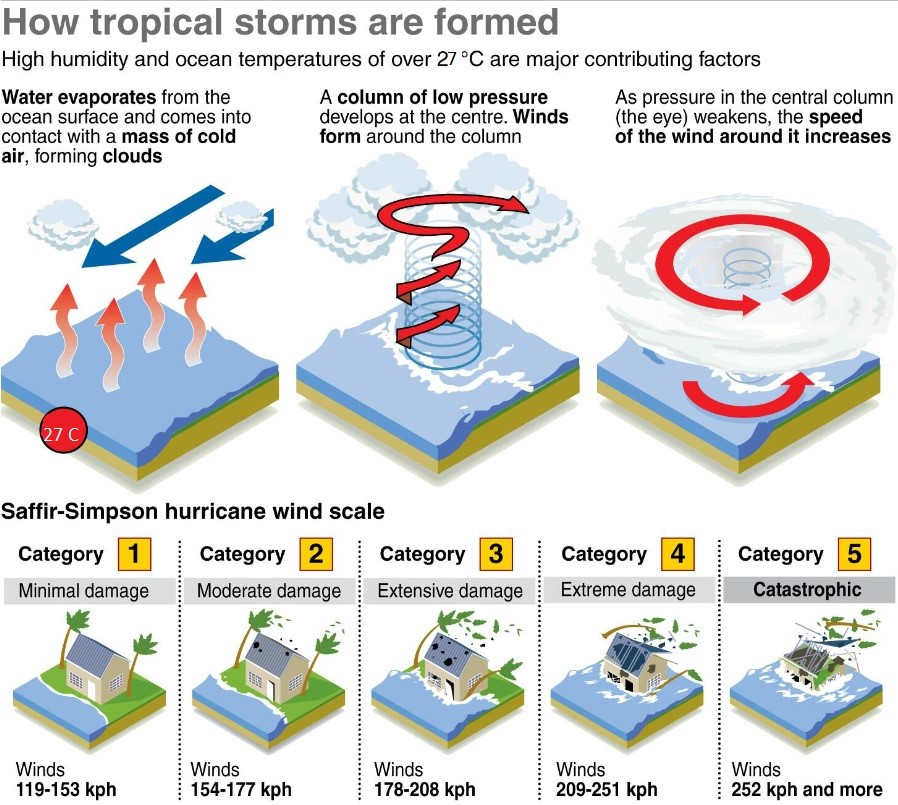India Faces Unusual Cyclone Activity This Monsoon
Why in the news?
India has seen twice the usual number of cyclones this monsoon due to rising sea temperatures and climate change, leading to intensified and more frequent weather events.
About Cyclone Activity in India During 2024 Monsoon:
- Increased Cyclone Frequency:
- India has experienced four deep depressions or cyclones this monsoon season, compared to the usual one or two.
- The increase is linked to rising sea surface temperatures (SST) and the anticipated arrival of La Niña by late September or October.
- Meteorologists note a trend of more frequent and intense low-pressure areas, attributed to climate change.
- Impact of Climate Change:
- The rise in SST has accelerated the formation and intensification of weather systems, leading to more rapid development of depressions.
- The frequency and intensity of these low-pressure areas over the north Bay of Bengal have increased, with depressions forming more quickly than in the past.
- Past five to six years have seen a noticeable rise in the severity and number of these weather events.
- Notable Cyclones and Rainfall:
- Cyclone Asna was unusual for its timing and location, being the first cyclone in August in the North Indian Ocean since 1981.
- Cyclone Yagi caused severe flooding in Myanmar and heavy rainfall in parts of India, including Delhi and Uttar Pradesh.
- The latest depression over the northeast Bay of Bengal has led to continuous rain in eastern India, with West Bengal, Jharkhand, and Bihar experiencing surplus rainfall.
About Cyclones:
- Definition: Rapid inward air circulation around a low-pressure area; anticlockwise in the Northern Hemisphere, clockwise in the Southern Hemisphere.
- Types:
- Tropical Cyclones: Also known as hurricanes or typhoons; form over warm tropical oceans, with winds exceeding 63 km/h.
- Extratropical Cyclones: Originate in Polar Regions; affect temperate zones due to the collision of warm and cold air masses.
- Cyclones in India: Form over the Bay of Bengal, Arabian Sea, and Indian Ocean, impacting coastal states with high winds and heavy rainfall. Recent examples include Amphan, Fani, and Yaas.
Sources Referred:
PIB, The Hindu, Indian Express, Hindustan Times




